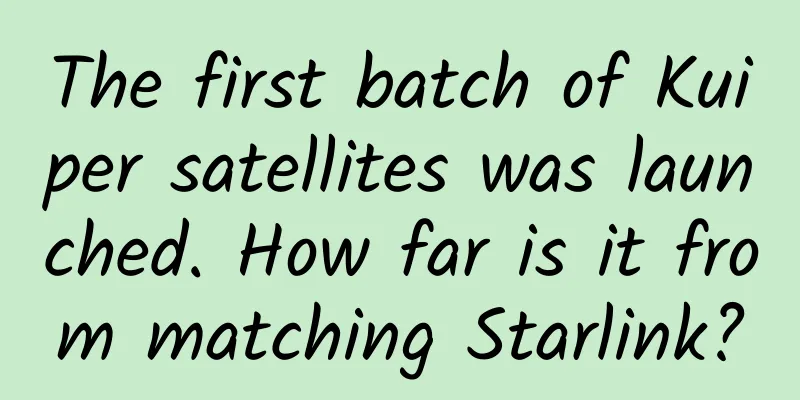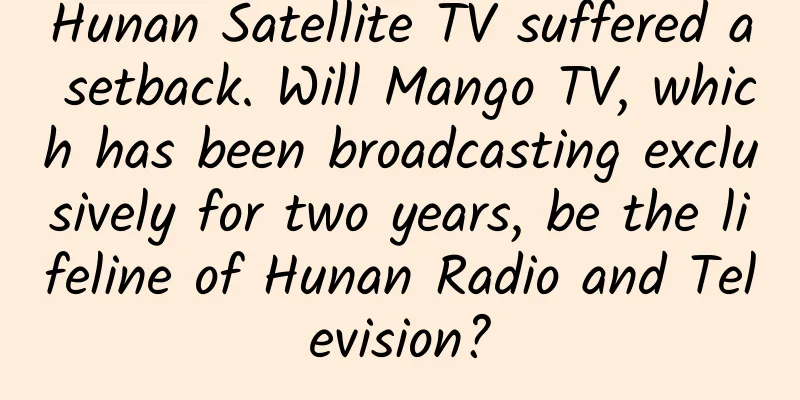The first batch of Kuiper satellites was launched. How far is it from matching Starlink?

|
Recently, the Atlas 5 rocket successfully launched the first two Internet satellites of Amazon's Kuiper Project, marking a key step for Amazon to build a space Internet constellation. What are the characteristics of Amazon's space Internet constellation? How does it compare with SpaceX's "Starlink"? What are its development prospects? Construction enters a new stage Project Kuiper is a space internet constellation construction plan announced by Amazon in 2019. Amazon is the world's leading Internet company and online retailer. It plans to invest $10 billion to build a Kuiper constellation consisting of 3,236 satellites to provide high-speed, low-latency Internet services to areas without access to broadband Internet. Amazon is steadily advancing the construction of the constellation. Kuiper satellites use many new technologies, and their main components include power technology and subsystems, phased array and parabolic antennas, power and propulsion systems, custom-designed modems, etc., with an in-orbit lifespan of about 7 years. Schematic diagram of the Kuiper Internet Constellation To manufacture satellites, Amazon has set up factories in several locations in Washington State, which are expected to be put into production by the end of this year, and can achieve a production rate of 3 to 5 satellites per day. The company also plans to build a satellite assembly plant at the Kennedy Space Center in Florida, covering an area of 31,000 square meters, which is expected to be completed next year. This location is the main site for future Kuiper satellite launches, and satellites shipped from Washington State will complete final launch preparations here. Kuiper Project received partial approval from the Federal Communications Commission in 2020, requiring Amazon to complete the deployment of at least half, or 1,618 satellites, by July 2026, and requiring the company to continue to modify its orbital debris mitigation plan. After multiple rounds of iterations, in February this year, the agency authorized Amazon to deploy a low-orbit broadband satellite constellation and provide operational services. In April 2022, Amazon signed the largest rocket transaction contract in history, spending billions of dollars to purchase launch services from Blue Origin, United Launch Alliance and European Arianespace. It will use New Glenn, Vulcan, Atlas 5, Ariane 6 and other rocket models to carry out 83 launch missions, each mission carrying 35 to 61 satellites to complete the constellation deployment plan. The launch of two test satellites marks a new phase in the construction of the Kuiper constellation. Engineers will conduct full-system and full-process verification in the space environment and on the ground, including satellite and payload operation status testing, network testing between the Internet, ground gateways, satellites and user terminals, etc. Amazon plans to start network testing with customers by the end of 2024. Taking into account the mitigation of orbital debris, the two test satellites will actively leave orbit after the mission and burn up in the Earth's atmosphere. In order to reduce the impact on astronomy, one satellite is equipped with a sunshade. By comparing the reflectivity between the two satellites, researchers tested the effectiveness of this method in reducing reflectivity and reducing the impact on ground-based optical telescopes. The results of this research will be shared with astronomers after the mission. Being left behind by Starlink As large-scale low-Earth orbit Internet constellations, Project Kuiper is easily compared with SpaceX's Starlink. However, Starlink has become the Internet constellation with the fastest construction progress, the most powerful performance, and the most complete functions. It has demonstrated great application value and development potential, has a disruptive impact in many fields, and has attracted much attention from all countries. Compared with Starlink, Project Kuiper has been pulled far behind. Judging from the construction plan and progress, SpaceX proposed the Starlink plan in 2015, which will launch 42,000 satellites. As of October 5 this year, the 111th batch of launches has been completed, and the total number of satellites in orbit has reached 5,222, which has exceeded the construction target of the Kuiper constellation. In terms of specific technical indicators, the Starlink orbit is more complex, distributed at three orbital heights of 340, 550 and 1,150 kilometers from the ground, taking into account both signal coverage and improving network service performance, and building a huge three-dimensional constellation covering the world. The Kuiper satellite orbit is mainly distributed at an orbital height of 590 to 630 kilometers from the ground. Starlink satellites use four frequency bands: Ku, Ka, V bands and intersatellite laser communication. After multiple rounds of upgrades, user test download speeds exceed 400Mbps with a delay of about 30 milliseconds. It has become one of the fastest broadband services in the world, and its long-term goal is to achieve a speed of 10Gbps. The Kuiper constellation has obtained authorization to use the Ka band and achieved a download speed of 400Mbps in early ground antenna tests, but the speed after the constellation is deployed still needs to be verified in the future. The two are basically the same in terms of service model and application scenarios. Users can access the Starlink network through antennas and matching wireless routers. Starlink has developed a variety of service models for different application scenarios, gradually expanding from individual and family users to business fields such as aviation, navigation, and mobile operations. It currently covers more than 2 million customers worldwide and may exceed 3.5 million households this year. The Kuiper constellation provides network access services through small customer terminals and ground communication networks. Amazon has announced three satellite antennas that it plans to sell to Kuiper broadband access customers and is widely looking for partners, such as Vodafone, to expand its 4G/5G network and enhance telecommunications services. In addition, Starlink has a unique advantage in its development model. SpaceX controls the entire chain from design, production, launch to operation. Starlink's constellation design and satellite development are all internal closed-loop production, with an average of 4 satellites manufactured per day, launched into orbit using reusable Falcon 9 rockets, greatly reducing costs. In comparison, Kuiper satellites are autonomous and controllable in other aspects, but the manufacturing plant is still under construction, and launch services still need to be purchased on the market, which is costly, and the constellation construction process may be restricted by launch factors. The situation is grim but the prospects are bright In recent years, satellite Internet has become a new frontier for development and competition in the space sector. The two major constellations, "Starlink" and "OneNet", have taken the lead and demonstrated broad application prospects. For national interests and security considerations, countries have proposed constellation construction plans. For example, Europe has launched the "Satellite Resilience, Interconnection and Security Infrastructure" project, which aims to deploy all EU communication satellite groups by 2027, ensure the sovereignty and autonomy of the EU's communication capabilities, and provide critical communication services in the event of a lack or interruption of ground networks. The construction of the Kuiper constellation is also an urgent need for Amazon's business transformation and development. Amazon's fastest growing part of performance is cloud services, and the company is also actively expanding into the Internet of Everything. To support core services, Amazon and other technology giants have invested heavily in the construction of the Internet and digital infrastructure. The space business is a natural extension of Amazon's data business and consumer business, which can provide goods, electronic products and resources to users around the world. Although Amazon is trying hard to catch up, the competition in the field of satellite internet is already very fierce and time is very urgent. Currently, the company's biggest pressure comes from launch guarantee. According to the launch contract, most Kuiper satellites will be launched using New Glenn, Vulcan and Ariane 6 rockets, but the development progress of these three rockets has been repeatedly delayed and no launch has been carried out. Amazon shareholders even filed a lawsuit, claiming that because of the company's competitive relationship with SpaceX, they did not consider handing over the launch business to SpaceX, resulting in more costs and delays. On the other hand, the first-mover advantage of Starlink satellites and the large number of satellites in orbit squeezed the living space of other constellations. Amazon accused SpaceX of lowering the satellite orbit altitude, interfering with its own orbital deployment plan, and increasing the risk of space collisions and electromagnetic interference. SpaceX countered that it was not in the public interest to hinder the development of Starlink for the sake of the Kuiper constellation, which would not be put into operation for many years. In addition, the application demonstration of "Starlink" has brought it more resources. SpaceX recently won a $70 million contract from the US military to build the military version of "Starlink" - the Star Shield system. In contrast, Amazon can only rely on its own capital investment. Despite the grim situation, Amazon still maintains sufficient confidence. On the one hand, this is due to its very large user base and the first-mover advantage brought by cloud computing business; on the other hand, the satellite communication business has broad prospects. There are still large areas and a large population in the world that do not have access to broadband networks, and the world still has room to accept the new space Internet. (Author: Yang Shirui, Image source: Amazon, Gatekeeper: Jiang Fan, Deputy Director of the Science and Technology Committee of China Aerospace Science and Technology Corporation) |
<<: Are the water chestnuts you eat 20 cents, 40 cents or 0 cents?
Recommend
PS VR hardware and software review: Sony's device is not a threat to the VR world at all
PS VR, which was released half a year later than ...
Facing the "uncertainty" of products and operations, my two working methods and judgment logic
When developing products or doing operations , yo...
Guangdiantong Delivery Case V2.0 Design Summary (Interaction)
Project Background Before the revision of Guangdi...
Twin brothers in Wuhan both scored 664 points in the college entrance examination. Do they have the same IQ? What do the experts say?
The college entrance examination results came out...
Summary of 12 methods of traffic promotion
The purpose of drainage is just to increase fans....
The first electron beam was successfully accelerated. What exactly is HEPS?
March 14, 2023 The 13th Five-Year Plan for Nation...
How can brands leverage solar terms to carry out good marketing planning? Here are 3 classic cases
Today is the "Minor Snow" in the 24 sol...
China Mobile: TD-LTE voice call success rate has reached 98%
During the 2014 Shanghai Mobile Asia Communication...
Technology Morning News丨my country's COVID-19 vaccine has been fully vaccinated with more than 1.2 billion people
【Today’s cover】 Recently, the 23rd Harbin Ice and...
Massive advertising and account establishment
What do you need to know to interpret and deploy ...
Your butt may have lost its memory because of what you often do.
Many adults sit for more than 8 hours a day, sitt...
Mao Xiaobai: Using video traffic to sell niche audio for cash, 5 videos a day to make money without supervision
Exclusive small project, the gameplay is first re...
Why was the strategy of flooding the market with devices abandoned? Blame it on the operators
A few days ago, Huawei's Consumer Business Gr...
It is not recommended to eat water chestnuts raw with the skin on, as it may cause intestinal ulcers and intellectual impairment...
Expert of this article: Liu Jingjing, PhD in Food...









